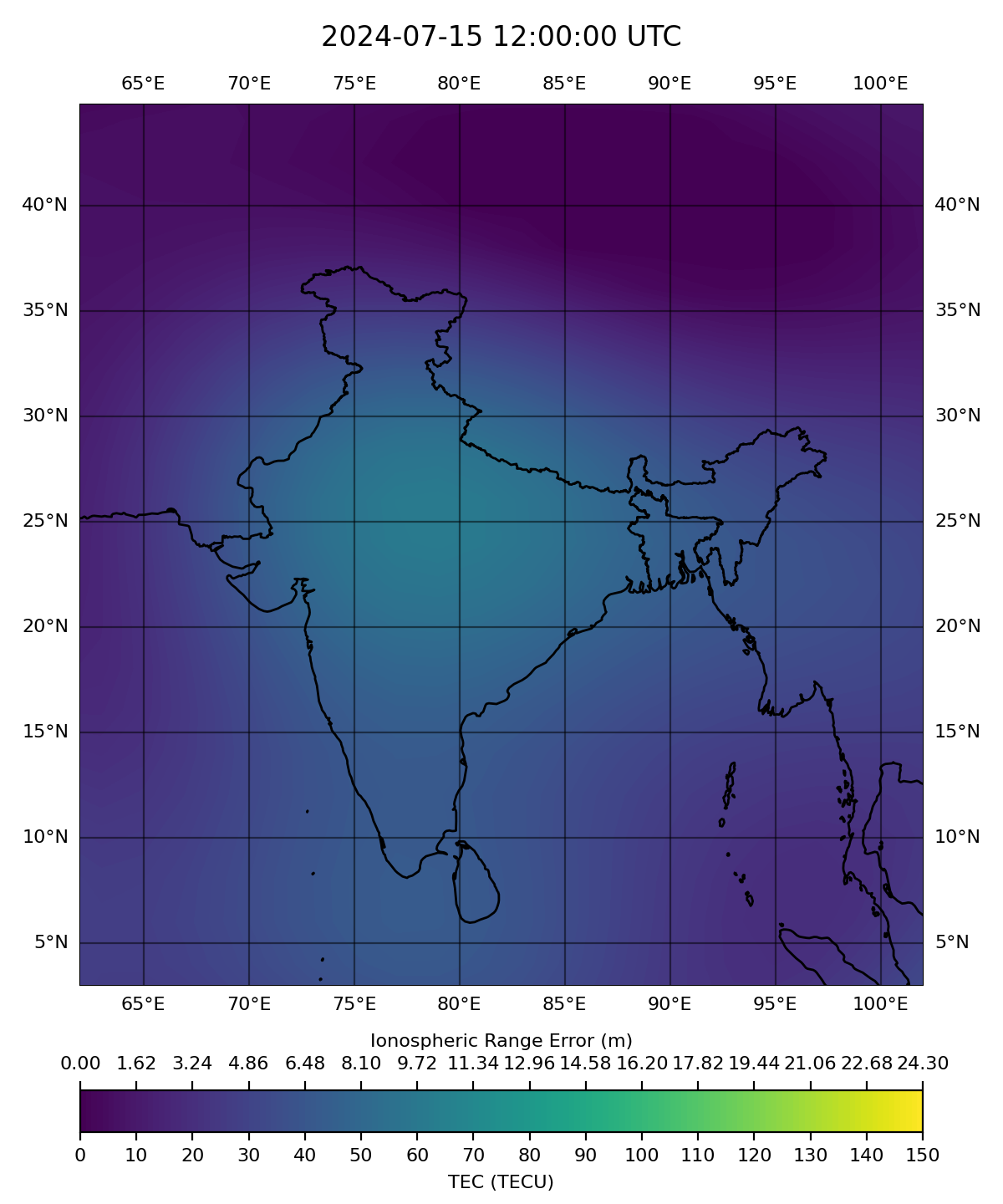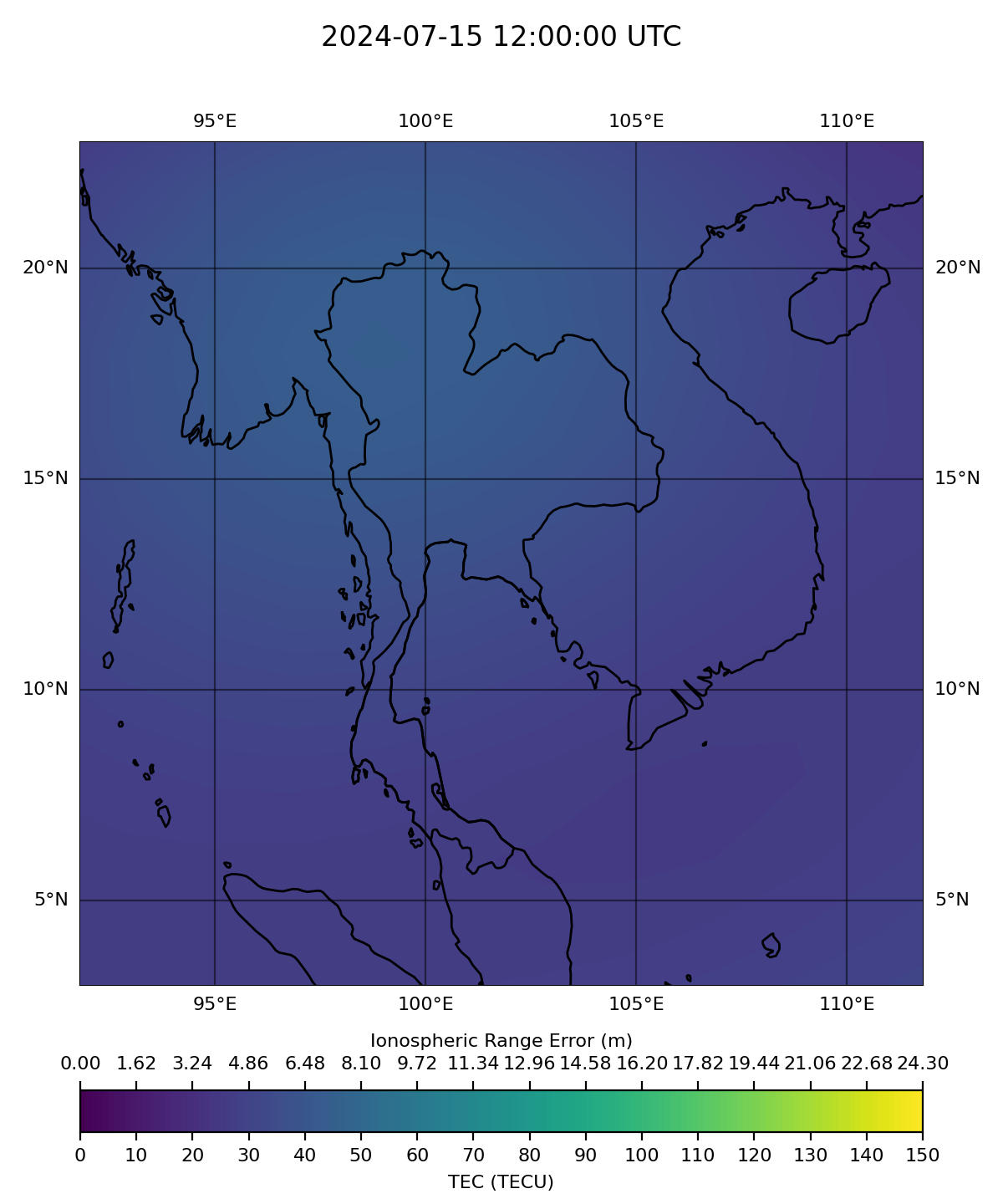Regional Total Electron Content (TEC) Map
15 July 2024 12:00 UTC

15 July 2024 12:00 UTC

15 July 2024 12:00 UTC




Till now, no substantial research has been done to obtain near real-time regional TEC mapping in Asean region and to find out the GPS positioning errors on L1-band during geomagnetic storms. This research proposes the development of a model that will be useful for many GPS dependent applications for civilian users wherein, meters of accuracy matters. This research proposes an approach to map and model the regional Total Electron Content (TEC) representation using Spherical Cap Harmonic Analysis (SCHA) [Haines,1988] which, when applied to the whole sphere, is the usual method referred to as ordinary Spherical Harmonic Analysis (SHA). The model is based on longitudinal expansion in Fourier series and fractional Legendre colatitudinal functions over a spherical cap-like region. The proposed research will take the advantage of existing IGS, GNSS network in India and Asean partner countries along with initiating the collaboration with other universities & nations across the region with GNSS stations.
Background : Total Electron Content, GNSS Geomagnetic
Storms, GNSS Positioning Errors, Real-Time TEC Mapping
1. To investigate the behavior & impact of geomagnetic storms on
GNSS across the region
2. To evaluate the GPS positioning error on L1-band during space
weather events
3. To develop a model for near real-time regional TEC mapping
across the region
Space weather which is governed by solar activities is the key cause of the Sun-Earth interaction system. The Sun-Earth interaction significantly affects the magnetosphere-ionosphere-thermosphere system leading to diverse physical phenomena. Solar eruptions caused due to magnetic activities of the sun, propagate through interplanetary space and interact with the terrestrial magnetosphere consequently affecting the near–Earth space environment and the upper atmosphere. The earth’s ionosphere is highly affected by the space weather events such as Coronal mass ejections, geomagnetic storms, solar winds, and solar flares. The earth’s ionospheric parameters such as electron density, total electron content (TEC), electron and ion temperature behaves in a varied fashion to the incoming solar flux, electrodynamic drift, which makes its prediction very complicated. These parameters are found to be varying with local time, season, latitude, longitude, solar activity, and the conditions on the sun and earth’s magnetic field. The equatorial and low-latitude ionosphere has been of interest to many researchers worldwide, owing to its illustrative density and temperature features, such as the equatorial ionization anomaly (EIA), the plasma fountain, and the equatorial electrojet. The low latitude ionosphere is highly influenced by various electrodynamic processes which in turn introduce large ranges of temporal and spatial variations during both geomagnetic quiet and disturbed conditions [Fejer 2010, Abdu 2016]. These variations will affect the space-based navigation and communication systems that are used in most of the day-to-day societal applications.
As a well-known fact, the ionosphere is a significant source of error in satellite navigation systems, such as GPS. In ordinary operation, the position of a GPS receiver is estimated by measuring the time delay between a radio signal transmitted from each satellite and the reception of that signal at the receiver. Assuming a constant speed of light, this time delay can be converted to a receiver-satellite distance. By comparing the distance to multiple satellites a GPS receiver can determine its three- dimensional position. The ionosphere disrupts this approach since the GPS radio signal is slowed by the presence of free electrons, causing an additional time delay and hence an error in the distance to each satellite. The greater the total number of electrons on the signal path, the greater the time delay. With our dependency on satellite-based technologies in various applications, the studies conducting the responses of the ionosphere to geomagnetic storms have become inevitable. These research studies can lead us to understand the energy coupling of sun –earth interaction system and for forecasting space weather changes. Thus, understanding the behavior of these geomagnetic storms across the equatorial region and modeling them to predict the future impact on the ionosphere and GPS positioning is the need of the hour.

Lead PI Dr. Rajesh Chowdhary
Mr. Sushrut Joshi
International Institute Of Information Technology,P-14, RajivGandhi Infotech Park, Phase - I Hinjawadi, Pune, Maharashtra, Pune-411057

Lead PI Prof. Mardina Abdullah
Ms. Siti Aminah Bahari
University Kebangsaan Malaysia Space Science Centre (ANGKASA), Institute of Climate Change